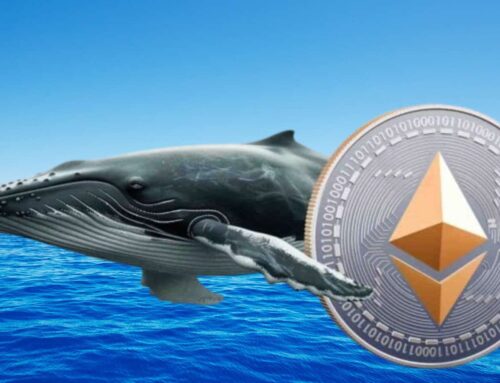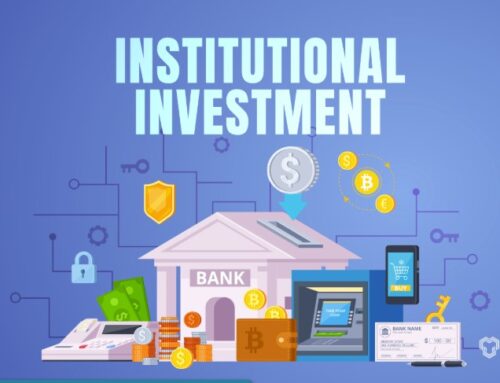How China’s BYD went from Bargain Battery Maker to Tesla’s biggest Rival
December 8, 2023
In-house cost cutting, tech innovation and state industrial policy drove recent export surge

Chinese electric vehicle titan BYD’s booth was pride of place at the Japan Mobility Show in Tokyo last month. The U8 model, pictured, made its first appearance outside China at the event. (Photo by Mizuho Miyazaki)
How China’s BYD went from bargain battery maker to Tesla’s biggest rival
In-house cost cutting, tech innovation and state industrial policy drove recent export surge
TOKYO/HONG KONG — It was just before 11 a.m. on Oct. 25, at the start of the Japan Mobility Show, the country’s premier auto extravaganza held in Tokyo. A sizable crowd, including Koji Sato, CEO of Toyota Motor, had already assembled around one booth, waiting for a news conference.
Unheralded and unannounced, one man dressed in a low-key navy blue suit and tie emerged from backstage and took a seat in the audience.
Few people in attendance seemed to recognize him as Wang Chuanfu, the architect of one of the world’s largest electric vehicle makers and Tesla’s biggest rival, BYD. As he appeared, one BYD media relations officer began applauding, an effort which soon halted awkwardly when no one else joined in.
While a senior manager from BYD enthusiastically presented the Shenzhen-based automaker’s flagship technologies, Wang sat semi-anonymously in the audience, casting a serious gaze around the crowd. He did not say a single word during the news conference but sat with his hands crossed over his chest and a contented smile gracing his face.
“A new future for electric vehicles in Japan starts here,” Liu Xueliang, head of BYD’s Asia-Pacific sales division, told the audience.
Traditionally dominated by local brands, Japan is a hard market for foreign automakers to crack. But Wang and BYD’s inaugural appearance at Tokyo’s premier auto show was a signal of the company’s confidence following a year of breakthroughs in markets throughout the world.
In the third quarter of this year, BYD came within a hair’s breadth of beating Tesla in terms of EV units sold worldwide, selling 431,603 battery-powered EVs, up 23% from the previous quarter, while Tesla delivered 435,059 vehicles worldwide. The gap between the automakers was just 3,456 units.
Outside China, the world’s largest EV market where it is the undisputed champion, in several months this year, BYD claimed the throne of bestselling EV in Thailand, Sweden, Australia, New Zealand, Singapore, Israel and Brazil.
Chinese EVs are penetrating Asian and European markets at an unprecedented rate, reminiscent of an earlier era when shifting energy markets drove change in the auto industry: In the 1970s, fuel-efficient Japanese cars entered the U.S. market during the oil crisis, presaging a wholesale shift in the industry.
Now it is China’s turn to benefit from structural change in the energy industry, as consumers and governments move away from combustion engines and fossil fuels and toward greener energy sources in pursuit of zero-carbon targets.
For decades China’s auto industry stood out for its lack of exports but this year, for the first time, the country is exporting more cars than it is importing. Driven by strong EV export growth, China surpassed Japan as the world’s largest car exporter in the first quarter of 2023 — though this includes foreign cars produced in China.
China’s success would be difficult to envision without the parallel example of BYD, which all but founded the Chinese industry and which today still accounts for over a third of the EVs produced domestically.
“Chinese brands, particularly BYD, are delivering a whole lot of content for a whole lot less money and are going global with a cost advantage,” said Bill Russo, the founder and CEO of Automobility, a consultancy. “The Chinese consumers recognize that, whether they can carry that value proposition internationally is yet to be seen.”
The rise of BYD
In 1995, Wang Chuanfu, a 29-year-old battery researcher, resigned from a state-owned research institute and borrowed 2.5 million yuan (about $343,000 today) from a relative to build a factory to make mobile phone batteries. The company he founded, BYD, stood for “Build Your Dream.”
BYD did not build its first car, the gasoline-powered sedan F3, until 2005, with a battery-powered version, the F3E, built the following year. The latter was never marketed due to a lack of EV-related policy and technology support in China at the time but set the stage for a series of successful EV models.
The F3 looked almost identical to Toyota’s Corolla. BYD in the past has been accused of borrowing from its international peers, though Wang insisted in a 2007 interview with a Chinese car magazine that the company had only borrowed “nonpatented” technologies.
The road was not always smooth, but BYD soon emerged as a key player in China’s auto market. In 2008, a subsidiary of Warren Buffett’s fund Berkshire Hathaway agreed to purchase HK$1.8 billion (US$230.2 million today) of BYD shares.
At the time, the company was still primarily a producer of rechargeable batteries, albeit the world’s second-largest. Wang became the richest person in China in 2009 as BYD’s share price quintupled.
BYD’s EV sales did not start to soar until 2021, however, when a combination of the pandemic and surging prices, including for gasoline, fed new interest in EVs, allowing BYD to begin exporting its passenger vehicles in large volumes. The company sold 1.8 million units overall in 2022, more than triple its numbers from a year earlier.
The company’s EV sales have continued to break records this year, and as of October 2023, it has cumulatively sold over 5.7 million EVs globally. BYD stopped making gasoline cars last year.
Analysts attribute much of BYD’s success to its cost-cutting efforts: During its initial stages of growth, it stripped back the manufacturing process of cars to rely on cheap manual labor as much as possible, rather than capital-intensive machines.
The company also makes many components in-house, including batteries, which alone account for around 30% of a vehicle’s total cost. The company also uses a massive and vertically integrated network of factories to build everything from battery parts to the ships that transport cars abroad. BYD’s industry peers, by contrast, buy components at market rates from commercial suppliers.
In 2007, Wang told Chinese media that manufacturing components in-house was the secret to BYD’s quick growth. “Isn’t it said that building cars requires a lot of complex technology? I don’t think so,” he said. “I can handle everything on my own, as I am making electric vehicles.”
At the time, China’s engine and gearbox technologies lagged those of international peers, and Wang saw electrification as a way to leapfrog them. “Your expensive equipment is a pile of scrap metal to me,” Wang said, rhetorically addressing traditional engine makers. “For an electric vehicle, a single wire and four motors are enough to achieve four-wheel drive and seamless variable speed. No engine or gearbox is needed.”
A recent teardown by investment bank UBS of BYD’s Seal — a pure electric sedan that is the Chinese maker’s closest peer to Tesla’s Model 3 — revealed that 75% of the components were made in-house. That compares to 46% of components for a Tesla Model 3 made in China. UBS concluded that this helped the Seal achieve a gross profit margin of 16%, compared to 14% for the made-in-China Model 3.
“After our teardown of BYD’s Seal, we found that the cost advantage stems not only from inexpensive labor or a low-cost supply chain,” Paul Gong, head of China Autos Research at UBS. “Rather, it primarily arises from their improvement in engineering and technological innovation, as the high system integration eliminates certain costs associated with components.”
BYD remains competitive because its high vertical integration model cannot be easily copied by other Chinese automakers, said Wu Hui, deputy dean of China Yiwei Institute of Economics, a think tank focused on EVs.
“In the early stages of BYD’s development, the supply chain for new energy vehicles (NEVs) was not yet mature, so BYD had an advantage in self-producing most of the components, particularly due to its expertise in batteries,” he said. “Now BYD has already achieved a leading position in a lot of the component industry, and it will be hard for peers to start from scratch.”
BYD has also managed to reduce the overall volume and weight of its cars by 10%, due to its so-called e-platform 3.0, a new manufacturing technology. In March 2020, BYD introduced its Blade Battery, which uses lithium-iron-phosphate (LFP), and enhanced the energy density and total capacity of the battery by increasing the utilization rate of the battery pack space.
In written comments to Nikkei Asia, BYD said its success is a result of the company’s “long term investment in technology and unwavering commitment to new energy vehicles in the past two decades,” as well as its self-production of core components that ensures its “strong risk resistance capabilities.”
The national strategy
China’s EV strategy began to take shape just as BYD was maturing as a company, and the two have grown in parallel ever since. From around 2008, Beijing began to see electrification not only as a shortcut to auto industry leadership but as an answer to a number of other problems, including pollution and dependence on foreign oil imports from the Middle East.
The success of China’s EV industry is unquestionably thanks to massive state intervention — a combination of subsidies, carbon credits and license plate restrictions, not to mention a massive state-backed investment in charging stations. Beijing has poured more than 100 billion yuan into new energy vehicle (NEV) subsidies that cover EVs and hybrids since 2009.
Initially applied to buses, the range of subsidies started to be applied to passenger cars in 2010, and stepped up after 2014, at times covering up to 60% of the purchase price of an EV.
Following the subsidies, hundreds of startups jumped on the EV bandwagon. There were as many as 487 electric vehicle manufacturers in China at the peak in 2018, but after consolidation only around 40 operate normally this year, according to state media.
At the end of last year, subsidies from the central government, the amount deducted from the final price paid by the consumer, came to an end. But other forms of local government support, such as vouchers and tax exemptions for consumers buying EVs and benefits for EV owners for license plate applications, continue.
From 2015 to 2019, China also implemented a “power battery whitelist” policy: Only EVs equipped with batteries on the list — all made by Chinese companies — were eligible for subsidies. This policy mutually reinforced China’s dominance in batteries and in EVs. Though the subsidy was abolished in 2019, Chinese players now dominate the global battery industry due to the scale of China’s EV industry, leading to lower costs.
A former senior executive from a leading U.S. automaker who asked not to be named said the success of Chinese battery manufacturers was “all about how they managed to find a low-cost solution.” He added that competing Japanese and South Korean manufacturers don’t have access to the same raw material supply chain, though their products are “reliable and with high quality.”
“I would say, without a doubt, the EV industry in China was built on the back of government support,” said Stephen Dyer, partner and managing director at the consultancy AlixPartners.
In the past decade, China has managed to use its huge market to entice German and American automakers to build electric vehicles in the country. In a step vital for China’s electric vehicle industry, Tesla in 2019 built an EV gigafactory in Shanghai, which has had a transformative effect on Chinese auto suppliers, helping them adapt to the industry.
Another key state intervention was a massive investment in charging stations: EV adoption in China had remained below 5% until 2021, when the initial highway charging network was completed. As the charging net grew, China’s EV adoption surged, with these vehicles accounting for over 30% of all new auto sales in the first half of this year.
At the end of September, China had around 2.5 million public charging points throughout the country. The network is well-established along major highways and within big cities, while authorities are actively working to expand the charging infrastructure in rural areas across the country.
A bumpy outlook overseas?
Over the next few years, Chinese original equipment manufacturers like BYD are expected to reap significant benefits in Southeast Asia from growing demand for EVs, according to a recent report by Counterpoint, the consultancy. Established industry players in the region, like Toyota, have been slow in their transition to EVs, leaving opportunities open for new entrants.
“There’s a big window of opportunity, especially for someone like BYD, which has enjoyed a massive home market head start,” said Ivan Lam, senior analyst for manufacturing at Counterpoint.
In Thailand, BYD sold 14,700 EVs in the first eight months of this year, representing 34% of overall electric vehicle sales, the biggest share in the market, according to Autolife Thailand. As BYD gradually gains momentum in the country, some dealers have switched from selling Japanese brands to BYD.
But the outlook for Chinese EVs in Europe and the U.S. is much less rosy than in Asia.
Around half of made-in-China EVs are exported to Europe due to the region’s high demand and low import tariffs. But in October, the European Commission initiated an anti-subsidy probe into battery-powered cars made in China, whose market share in Europe has increased to 8% and is projected to potentially reach 15% by 2025. The move could lead to increased tariffs on imports of Chinese electric vehicles to the EU.
The Commission said cheaper Chinese electric cars, which are typically priced 20% lower than EU-made ones, are benefiting from huge state subsidies and could distort the EU market.
Many of these Chinese imports, meanwhile, are produced in China but by foreign carmakers, which further complicates the matter. According to a report by the Center for Strategic & International Studies, the Washington think tank, made-in-China EVs in the first half of 2023 accounted for 11.2% of all EVs sold in Germany, but out of the 32,000 made-in-China EVs sold, only 9% belonged to a Chinese brand. Most were from Chinese-owned European brands such as MG or Polestar, joint ventures between European and Chinese companies, and Teslas manufactured in Shanghai.
At the Las Vegas CES early this year, Carlos Tavares, CEO of Stellantis, the Euro-American car conglomerate, said it cost European automakers 40% more to build an EV in Europe versus Chinese carmakers in China.
Observers in Europe said the EU’s anti-subsidy investigation into EVs is not really about being able to punish China for EV subsidies but is a question of survival for the European economy, particularly for Germany and France, the biggest EU economies where the automobile industry is the cornerstone of prosperity.
“The EV sector is a strategic industry, valued at billions of dollars and supporting hundreds of thousands of jobs. If China engages in unfair competition or anti-competitive practices in producing EVs, there is a risk of the entire EU industry collapsing,” said Marc Julienne, head of China studies at the French Institute of International Studies.
Experts say that the ultimate purpose of the investigation is to force manufacturers to build factories in Europe.
Li Yunfei, general manager of BYD’s branding and PR division, told Nikkei Asia that the company will announce where to build its first factory in Europe by the end of the year, as the company is still evaluating the multiple options. Li didn’t specify if the factory will just assemble auto parts or will manufacture some parts as well.
When asked how the EU anti-subsidy probe will impact BYD’s business, Li hesitated and said the company will “comply with local regulations and laws.”
The European Union is also striving to establish its own battery supply chain by implementing policies that facilitate quicker decision-making on project financing within the battery value chain, a move deemed by experts as “feasible but costly and lengthy.”
To build its own battery supply chain, the EU will face significant challenges such as obtaining supplies of critical raw materials, which will require developing domestic capacities within the EU, including extraction, and gaining acceptance from the population, according to Malorie Schaus, a research fellow at the CEPS, a Brussels think tank.
“It is too late for the EU to launch the anti-subsidy investigation towards EVs,” said Alicia Garcia-Herrero, senior research fellow at Brussels-based think tank Bruegel. “It would have been appropriate when China started subsidizing production back in 2009, but the reality is that European automakers in China benefited from the subsidies as well, so nobody saw this as a risk.”
In contrast to Europe, the export of EVs manufactured in China to the U.S. has been relatively limited as there is a 27.5% tariff imposed on automotive imports from China. The requirement of meeting local content criteria to qualify for EV tax credits is also a hindrance. BYD doesn’t sell passenger cars in the U.S., although its electric trucks and buses entered the U.S. years ago.
The U.S. passed the Inflation Reduction Act in 2022, which includes billions of dollars to support vehicle manufacturers looking to expand their domestic production of clean vehicles. However, it is limited to “trusted trade partners,” which all but rules out China.
UBS believes Chinese carmakers could double their global market share to 33% by 2030. But it is too early to say that Chinese EV brands will continue to make a splash in all foreign markets.
In BYD’s case, as of September, it had only delivered about 700 of its Atto 3 model in Japan since sales started in January. The company launched a second model, the Dolphin, in Japan in September.
A researcher studying the Japanese market at BYD told Nikkei that “it is easy to enter the Japanese market but not easy to do it well.”
“We started from scratch in the Japanese market, and we are still gradually exploring and figuring things out,” the researcher, who asked to remain anonymous, said.
But some in Japan do see BYD’s aggressive expansion as a threat.
“Chinese makers, including BYD, are putting out new cars at a fast pace, and we can’t catch up,” an employee at a Japanese automaker’s product planning division, who asked not to be named, told Nikkei.
“It is not because Japanese automakers lack technical ability,” the employee said, “but Chinese makers only use computer simulation in the early stage of the car design, whereas Japanese companies would use real-life models to adjust the smallest of details.”
This allows Chinese rivals to roll out products at a faster pace, the employee said.
“In the short term,” the employee went on, “customers could choose Chinese cars rather than ours, like fast fashion, and that’s a threat.”
But in the longer term, he said, “Chinese cars could have less value in the secondhand market compared to their Japanese counterparts. In the long run, we will be fine.”
Additional reporting by CK Tan in Shanghai, Sayumi Take and Ryohtaroh Satoh in Tokyo, Catherine de Beaurepaire in Brussels and Mailys Pene-Lassus in Paris.
Search
RECENT PRESS RELEASES
Related Post


















